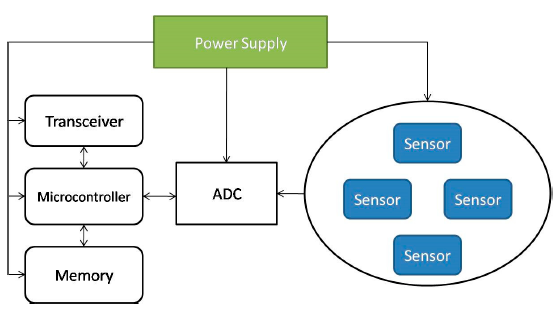ABSTRACT:
With the expansion of smart meters, like the Advanced Metering Infrastructure (AMI), and the Internet of Things (IOT), each smart city is equipped with various kinds of electronic devices. Therefore, equipment and technologies enable us to be smarter and make various aspects of smart cities more accessible and applicable.
The goal of the current paper is to provide an inclusive review on the concept of the smart city besides their different applications, benefits, and advantages. In addition, most of the possible IoT technologies are introduced, and their capabilities to merge into and apply to the different parts of smart cities are discussed.
The potential application of smart cities with respect to technology development in the future provides another valuable discussion in this paper. Meanwhile, some practical experiences all across the world and the key barriers to its implementation are thoroughly expressed.
IOT TECHNOLOGIES FOR SMART CITIES:
The IoT is a broadband network which employs standard communication protocols, whereas the Internet would be its convergence point. The major notion of the IoT is the widespread existence of objects which are able to be measured and inferred, as well as it is able to modify the situation.
Accordingly, IoT is empowered by the expansion of several things and communication equipment. Things in the IoT involve smart equipment such as mobile phones and other facilities including foodstuff, appliances and landmarks that can collaborate to achieve a joint objective.
Radio-frequency Identification (RFID):
RFID including readers and tags has a vital task in the framework of the IoT. Employing the technologies on each related thing, accomplishing their automatic identification and dedicating the single digital identity to any of the things will be possible, to include the network associated with the digital information and services.
Near Field Communication (NFC):
Near Field Communication (NFC) is used for bidirectional short distance communication, especially in smart-phones. This range usually involves a centimeter range. The application of NFC in smartphones enables us to use it in smart cities, as well.
Low Rate Wireless Personal Area Network (LWPAN):
LWPAN is amongst short-range radio technology, that covers large distances of up to 10–15 km. The energy consumption of this technology is extremely low and battery lifetime is about 10 years. According to the IEEE 802.15.4 standard, it provides low cost and low-rate communication for sensor networks. It has the lowest two layers of protocols including physical and medium access level, besides upper layers protocols including 6LoWPAN and ZigBee.
Wireless Sensor Networks (WSNs):
WSNs make diverse proper data available and might be applied in lots of uses like healthcare, as well as government and environmental services. Moreover, WSNs can be aggregated with RFIDs to obtain several targets such as gaining data related to the position of people and objects, movement, temperatures, etc.
ACTUAL IOT APPLICATIONS FOR SMART CITIES
The IoT uses the Internet to merge various heterogeneous things. Accordingly and for providing the ease of access, all existing things have to be linked to the Internet. The reason behind this is that smart cities include sensor networks and connection of intelligent appliances to the internet is essential to remotely monitor their treatment such as power usage monitoring to improve the electricity usage,light management, air conditioner management.
IOT POTENTIAL APPLICATIONS FOR SMART CITIES
Figure 7 demonstrates several possible applications of the IoT for the smart city which are
explained in this section.
PRACTICAL EXPERIENCE AROUND THE WORLD
According to the US National Intelligence Council present, the IoT is one of the most efficient sources of US economic profits on the way to 2025. As declared earlier, the interlinked objects were more than the people in 2011. This tendency has been increasing remarkably as the number of interlinked objects was around nine billion in 2012, whereas it is expected to be 24 billion till 2020.
CHALLENGES
CONCLUSIONS
The importance of considering how new concepts and technologies (especially the IoT) benefit smart cities is undeniable. The aim of this review article was to explore variant specifications and features of IoT systems, along with the efficient incentives for utilizing them.
Because the accomplishment of the IoT substructures can enable a volume of opportunities for smart cities, first, the most important research motivations were expressed and afterward, several main and helpful applications explained. It was illustrated how daily activities could be extended and improved through employing them. Likewise, the challenges arising from implementing the IoT system were accordingly outlined.
On this subject, the incorporation of the IoT platform into other independent and smart systems to provide an intelligent and widespread utilization is one of the most interesting future tendencies. Moreover, providing a methodology to cope with some important challenges, such as the privacy rights of the users/residents, is still an area of research interest.
Some of the developments in the actual implementation of smart cities across the world were presented, which can be considered as samples or pilot projects for future comprehensive smart cities. The IoT through its functionality and specifications should indeed employ smart systems and sensors to ensure residents’ rights.
Source: University of Beira Interior
Authors: Saber Talari | Miadreza Shafie-khah | Pierluigi Siano | Vincenzo Loia | Aurelio Tommasetti | João P. S. Catalão
>> Latest RFID Based IoT Projects for Engineering Students
>> IoT Environmental Monitoring System for Smart Cities Projects for Students
>> More Wireless Sensor Networks Projects Abstract for Final Year Students
>> More Wireless Energy Projects for Final Year Students




